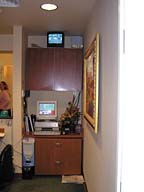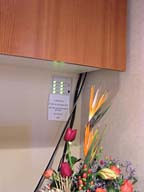
System Helps Warehouse Reduce Shrinkage by 90 Percent
When a client’s revenue relies heavily on merchandise shipped into or out of a warehouse, controlling theft by employees and suppliers who have access to that warehouse is critical. BCI Technologies of Grand Prairie, Texas, helped one of its retail clients reduce shrinkage by 90 percent in just over a year by upgrading its video surveillance system from one based on a VCR to a DVR-based system with motion detection capability.“The client also has eliminated countless hours of reviewing video tapes looking for an incident,†says BCI director of sales, Stewart Wessell.
The installation now has 64 cameras, including one very critical camera at the loading dock. Most of the cameras do not record unless motion is detected, in which case they record at seven frames per second. But the camera at the loading dock records continuously at one frame per second – and when motion is sensed, recording kicks up to the maximum rate of 30 frames per second. “Whenever the dock door goes up, it increases the frame rate,†Wessell says.
The system also records 30 seconds prior to when the motion is sensed at the full frame rate. The previous 30 seconds are saved in a buffer prior to being recorded.
BCI’s client generally has about half an hour to an hour of footage from the loading dock to review each day. If any particular merchandise is missing, management can click on an image of the merchandise when it was still present and the system’s smart search function will locate any changes of scene involving that image, helping management discover when and how the merchandise disappeared.
Not long after the system was installed, the client dismissed some employees who were found pilfering. Since then, there have been no problems. “The system acts as a deterrent,†Wessell says. If the client ever did have to prosecute, however, the 30-frame-per-second images could be excellent evidence.

Video Motion Detection Helps Care Staff Monitor Elderly Residents
Retirement communities sometimes find themselves with residents who require an extra level of supervision. Residents with certain physical or mental conditions, for example, may try to leave the premises unauthorized and may not be well equipped to take care of themselves.
By using a video surveillance system with motion detection, Allied Security of Spokane, Wash., was able to help one of its retirement community clients balance the need to protect residents from unauthorized departure with the requirement to also provide for emergency exit.

“Someone has to respond to the alarm,†says Dan Murphy, security consultant for Allied Security.
To silence the buzzer, a staff member must walk over to the monitor and press a button. The set-up helps ensure that the staff member looks at the image on the monitor and can take immediate action in the event that a resident is making an unauthorized departure.

Client Benefits from Better Picture Quality, More Archives
The reason some clients prefer video surveillance systems with motion detection is purely a matter of image quality. For example, a corporate client of E. Norman Security of Naperville, Ill., was delighted when it upgraded from a 32-camera system that recorded continuously onto two VCRs. The new system uses two DVRs for archiving, recording only when motion is detected.“The client is very happy because the picture quality on the DVR is much better,†says E. Norman president, Paul Gulczynski. Because the VCRs in the old system were recording continuously, it was difficult for the client to keep the heads clean, and picture quality often suffered, Gulczynski says, adding, “The digital quality is 10 times better.â€
Recorded images from the new system are also less choppy. When motion is sensed, the new system records at three frames or more per second. In contrast, the old system, which continuously recorded the output from a 16-channel multiplexer to each VCR, captured fewer than two frames per second.
A final benefit of the new system is the length of time archived. Despite the higher image quality, the DVR-based system is able to record about 40 days of archives before it fills up and begins recording over the oldest material. With the old system, each VCR filled a tape each day. The company maintained a 31-day tape library for each VCR, enabling it to keep only one month of archives.
Reviewing archives is also much easier for the client now. In the past, management would periodically review a 24-hour period of tape, which required about two hours. Now that the system only records when motion is detected, that task can be accomplished in much less time.
“The client can also quickly locate any incidents that happen,†Gulczynski says. When a truck driver backed into the client’s building, causing substantial damage, then fled the scene, management was able to use remote viewing software to quickly identify the license plate number through recorded images of the event. Because the system only records when it sees motion or a change of scene, those images were retrieved quickly.
Sidebar
Securing a Difficult Area
A client of Video Master in New Lenox, Ill., faced a problem similar to that of the retirement community. The client was a railroad that wanted to secure one of its yards, but also needed to provide access to the yard to authorized individuals during certain hours.“They leave the gate open during certain hours,†says David Meeks, vice president for Video Master.
The solution was to begin recording and to sound an alarm at a guard booth when the client’s video surveillance system sensed motion from the camera installed at the yard. “It beeps at the guard when motion is detected,†Meeks says.
Meeks notes that because the camera is installed outdoors, it is sometimes tripped by wind blowing. But the guard can determine whether any action needs to be taken by surveying the scene, aided by the pan/tilt/zoom capability of the camera.